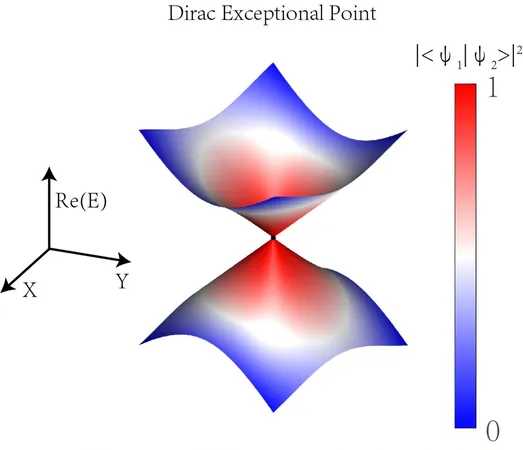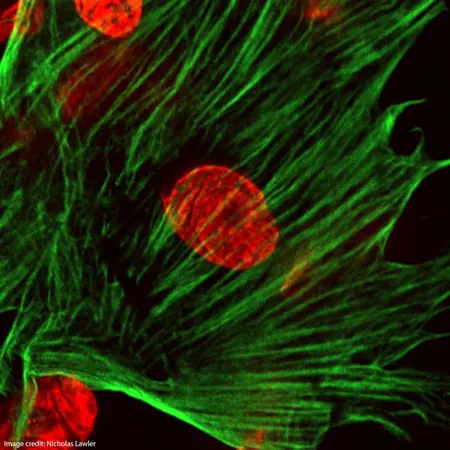
Revolutionary Discovery: The First Ever Observation of Dirac Exceptional Points
2025-04-27
Author: Siti
What Are Dirac Exceptional Points?
Exceptional points (EPs) represent fascinating energy-level degeneracies found in non-Hermitian systems. Proposed over a century ago, physicists have only recently been able to observe two types of EPs, which lead to exotic phases of matter in materials like Dirac and Weyl semimetals. But hold onto your hats—new research has unveiled a groundbreaking class of EPs called Dirac EPs!
A Breakthrough from China
Researchers from the University of Science and Technology of China have achieved what was once thought to be a theoretical pipe dream. In a study published in Physical Review Letters, they have successfully observed Dirac EPs, setting the stage for revolutionary advancements in non-Hermitian dynamics and quantum system control.
Turning Theory into Reality
Inspired by earlier theoretical work, senior author Xing Rong shared, "Our discovery transforms a theoretical proposal into a tangible reality. Dirac EPs are unique and distinct from any EPs observed in the last fifty years." At its core, this research blends concepts from Hermitian and non-Hermitian systems, offering a fresh perspective on energy-level degeneracies.
The Amazing Experiment Behind the Discovery
To prove the existence of these Dirac EPs, the team utilized nitrogen-vacancy defects in diamond—tiny atomic-scale quantum systems embedded within solid-state materials. Using an innovative non-Hermitian Hamiltonian model, they introduced a spin-squared operator into a three-level structure, confirming Dirac EPs by observing real eigenvalues and degeneracies.
Implications for the Future
The implications of this discovery could reshape the landscape of quantum physics. As Rong points out, "Dirac EPs showcase a real-valued eigenvalue spectrum, challenging the traditional thought that EPs are only associated with complex eigenvalues. This could lead to adiabatic evolution in non-Hermitian systems, bypassing the challenges posed by dissipation."
A New Era for Quantum Technologies
Rong and his team envision their findings will fuel future research in quantum technologies, promising enhanced control over systems like quantum sensors and computers. By avoiding non-adiabatic transitions common in typical EPs, the research opens doors to exploring complex geometric phases within non-Hermitian realms.
Conclusion: Pioneering Future Discoveries
The observation of Dirac EPs marks a significant milestone in physics, potentially paving the way for innovative experimental studies in non-Hermitian systems. The future of quantum control could indeed hinge on this remarkable work, reshaping how scientists and engineers harness quantum technology.


 Brasil (PT)
Brasil (PT)
 Canada (EN)
Canada (EN)
 Chile (ES)
Chile (ES)
 Česko (CS)
Česko (CS)
 대한민국 (KO)
대한민국 (KO)
 España (ES)
España (ES)
 France (FR)
France (FR)
 Hong Kong (EN)
Hong Kong (EN)
 Italia (IT)
Italia (IT)
 日本 (JA)
日本 (JA)
 Magyarország (HU)
Magyarország (HU)
 Norge (NO)
Norge (NO)
 Polska (PL)
Polska (PL)
 Schweiz (DE)
Schweiz (DE)
 Singapore (EN)
Singapore (EN)
 Sverige (SV)
Sverige (SV)
 Suomi (FI)
Suomi (FI)
 Türkiye (TR)
Türkiye (TR)
 الإمارات العربية المتحدة (AR)
الإمارات العربية المتحدة (AR)